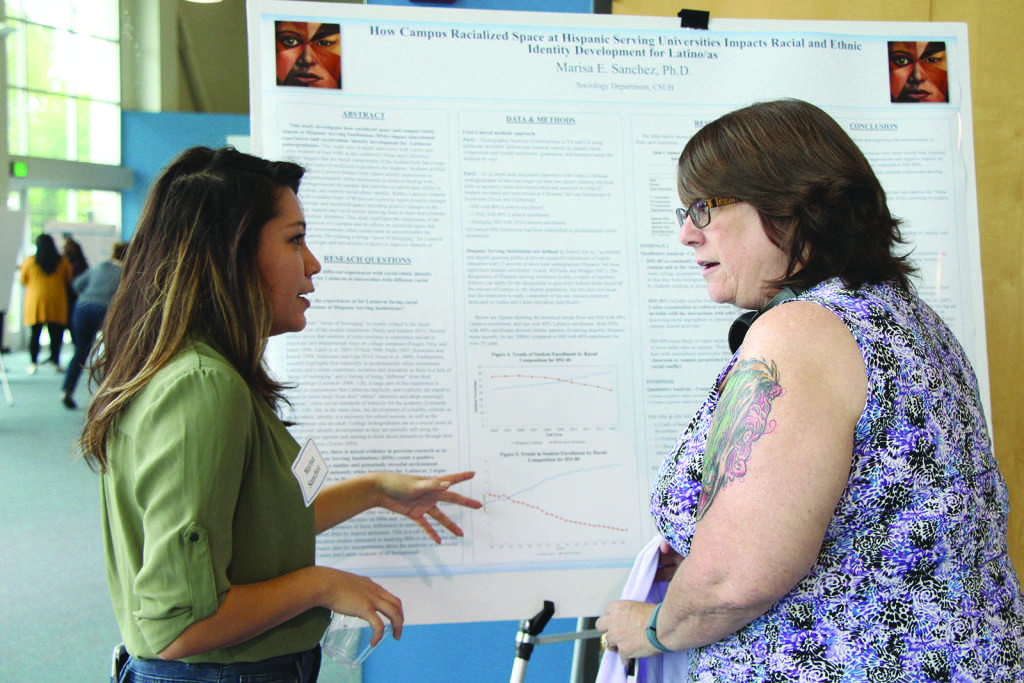Reporter
CSU Bakersfield hosted its second annual Research Excellence Day on April 8, which showcased research conducted by professors and students of different disciplines.
Jenny Zorn, provost and vice-president of academic affairs, opened the faculty session by mentioning the impressive amount of research that takes place on the CSUB campus.
Professors from English, economics, biology, and psychology fields gave presentations on the interaction of distinct language groups, the effects of oil in Kern County, and the adaptation of organisms to their environment.
Professor Brandon Pratt said, “research and teaching are seamless.” Pratt emphasized the importance of getting students involved in research by providing hands-on experience in the field and lab.
Later in the day, students were given the opportunity to showcase their posters in the Student Recreation Center: Senior Christopher Williams talked about his current research on acoustic resonance spectroscopy (ARS).
“It’s a current method to measure milk fat content quickly and efficiently,” said Williams.
Williams explained that ARS allows for milk fat content to be measured by sound waves rather than by chemicals. Williams said ARS had been previously used when it was first introduced in 1989 in the military, in which weapons were tested to see what chemicals were in them.
Williams said “it can be useful here” in Kern County due to the many dairy farms, and it is important for milk fat content to be tested so that you know what you’re giving consumers.
Graduate Calvin Bron Susbilla shared about his recent research on tetrodotoxin levels, or better known as TTX in the frog Brachycephlus.
Susbilla tested 18 skin samples of frogs from six collection sites in Brazil which all tested positive for TTX. Williams states that his study is different than other studies because it gathers data from various areas of Brazil.
“I would like to see how the skin color of frogs correlates with TTX levels,” said Susbilla.
Senior Anthony Cruz was involved in research that tested tetrodotoxin levels by mothers to neonates of garter snakes.
In Cruz’s study, garter snakes were gathered from Benton County in Oregon and were fed natural prey that either had encountered TTX levels by their natural surroundings or had been fed natural prey that contained TTX levels.
Cruz further explained the meaning of TTX as a toxin. Upon research, “none had toxin,” said Cruz.
Cruz said that none of the garter snakes that were impregnated and had intake levels of TTX resulted in any findings of TTX in their offspring.







